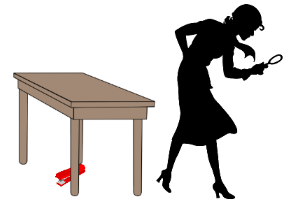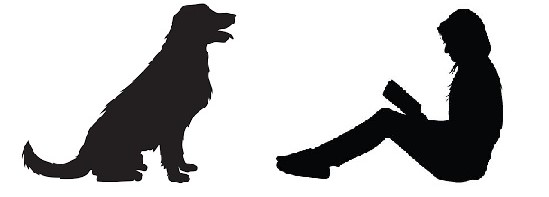| layout | title |
|---|---|
page |
Introduction to Postpositions & Articles |
An article specifies if a noun is a definite thing or an indefinite thing.
In English this is demonstrated by a/an or the. Article a is used when the following noun begins with a consonant (a flower), and an is used when that noun begins with a vowel (an icecream).
- The flower - there is definitely only one flower being talked about.
- A flower - we are talking about one of many flowers out there, it is not definite.
In Hungarian the articles are egy, a/az. Article egy is indefinite (it is also the number one as well), whereas a/az is definite.
Similar to English, a is used when the noun begins with a consonant and az with a noun beginning with a vowel.
- A kutya - The dog
- Az autó - The car
- Egy virág - A flower
Just like in English, the indefinite article is used to specify just one thing and to introduce a new noun to the conversation. As soon as this noun becomes known to the conversation, the definite article is used.
- Ez az ember itt dolgozik. - (This person works here.)
- Ez egy régi fa. - (This is an old tree.)
- Az a fiú mindig panszkodik. - (That boy is always complaining.)
- Az egy híres épület. - (That's a famous building.)
The definite article is also used before abstract nouns.
- Az élet. - (Life.)
- A zene. - (Music.)
- A szabadság. - (Freedom.)
Proper nouns don't use an article, except for specifying a type of pronoun. Similarly, this is used when talking about nouns that are members of a group.
- A Középkori Európa. - (Medieval Europe.)
- A Korszerű/Mai Magyarország. - (Modern-day Hungary.)
- A tarajos sül rágcsáló. - (A porcupine is a rodent.)
- A darázs rovar. - (A wasp is an insect.)
- A nárcisz virág. - (A daffodil is a flower.)
- A jacht csónak. - (A yacht is a boat.)
You can also make generalisations about nouns with the definite article.
- A farkasok ülvöltenek. - (Wolves howl.)
- A madarak csiripelnek. - (Birds chirp.)
- A magyarok pálinkát isznak. - (Hungarians drink Pálinka.)
If you listen on public transport, the definite article is used when announcing the next stop (as a street/square) or you can hear it used for institutions and organisations.
- A következő megálló a Hősök Tere. - ( The next stop is Hero's Square.)
- Sok ember van, a Váci Utcában. - (There are many people on Váci Street.)
- A Balassi Intézet kiváló hely a magyar nyelvtanuláshoz. - (The Balassi institute is an excellent place for hungarian language learning.)
The zero or "no" article is used often in Hungarian. Aside from the examples mentioned before, all the times that English uses an indefinite article, Hungarian uses none. It is also used for dates.
- Ma Március 23 van. - (Today is March the 23rd.)
- Nyelvtanár vagyok. - (I am a language teacher.)
- Tűz van! - (There's a fire!)
- Kicsit jobb lesz holnap. - (It will be a little better tomorrow.)
- Szép munkát végzel! - (You're doing a nice job!)
- Kérsz kólát? - (Would you like some coke? lit. You ask for coke?)
These examples show that the quantity is not important.
Itt van Éva, ő titkárnő. Keres egy tűzőgépet. Amikor megtalálta a tűzőgépet, boldog volt.
Here is Éva, she is a secretary. She is looking for a stapler. When she found the stapler, she was happy.
In English, there are prepositions. They dictate relationships between nouns. Here are some examples of spatial relationships.
- The bird flies above the city.
- The man is below the bridge.
- The boy is in front of the building.
In Hungarian, there are postpositions. They are placed after the noun relationship instead of between. Here are the translations.
- A madár a város felett repül.
- A férfi a híd alatt van.
- A fiú az épület előtt van.
A kutya a lány mellett ül.
The dog sits next to the girl.
These postpositions don't indicate relative movement between the nouns, i.e. at that specifc point of time, they are not moving away from each other. Spatial postpositions can also represent the relationship of a noun moving towards the other noun or away from that noun.
| Postposition | Moving towards (to) | No relative movement | Moving away (from) |
|---|---|---|---|
| Next to | Mellé | Mellett | Mellől |
| Above | Fölé | Felett/Fölött | Fölül |
| Below | Alá | Alatt | Alól |
| Infront of | Elé | Előtt | Elől |
| Behind | Mögé | Mögött | Mögül |
| Between/Among | Közé | Között | Közül |
Felett and fölött were a result of dialectual differences, however now they are virtually interchangeable.
IMPORTANT NOTE
Postpositions cannot be used with standalone pronouns, you have to attach the personal pronoun suffix instead.
-
István sat next to me.
István én mellé ült.- István mellém ült. (Sitting implies moving to sit somewhere, thus mellém is used instead of melletem)
-
The man came out from behind you
A férfi te mögül kijött- A férfi kijött mögüled.
-m,-ewhich are markers of the possession suffix-kthe plural ending-ban,-hozwhich are locativesmeg, marking telicityjobb, an example of a comparative

